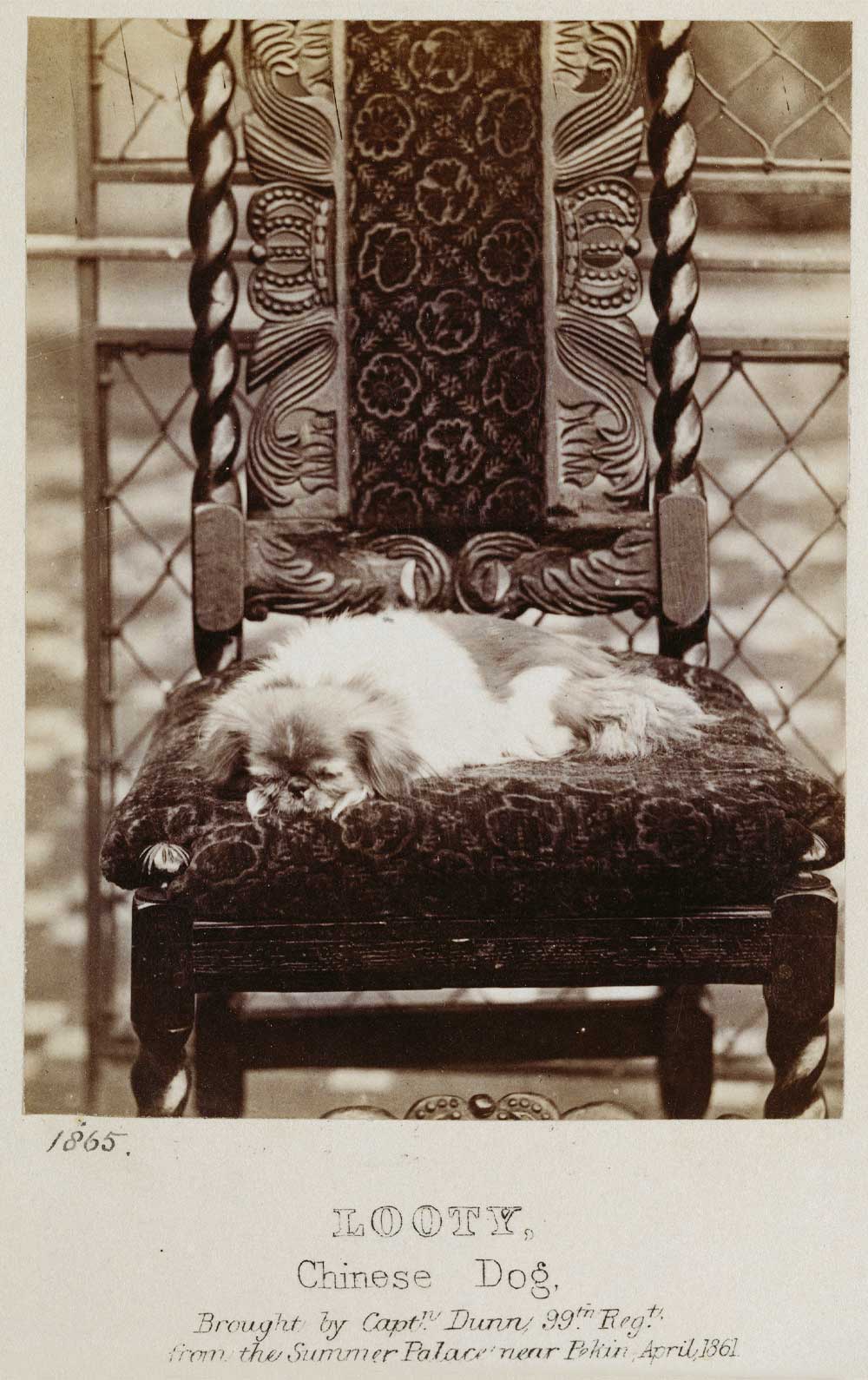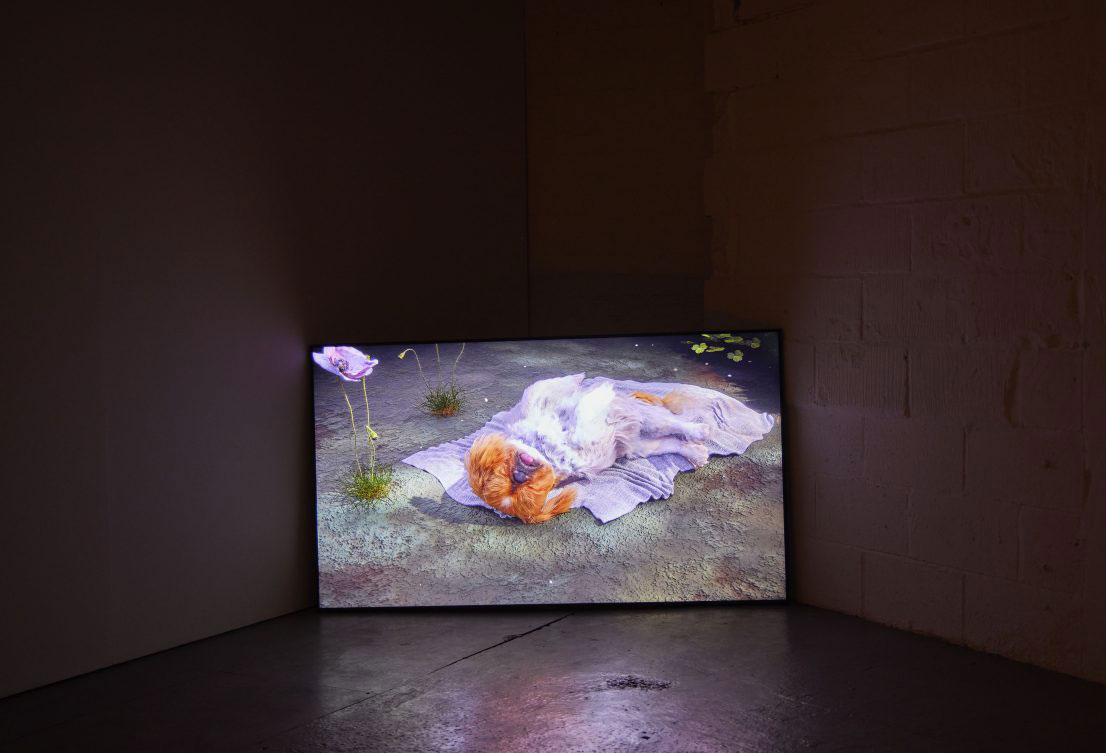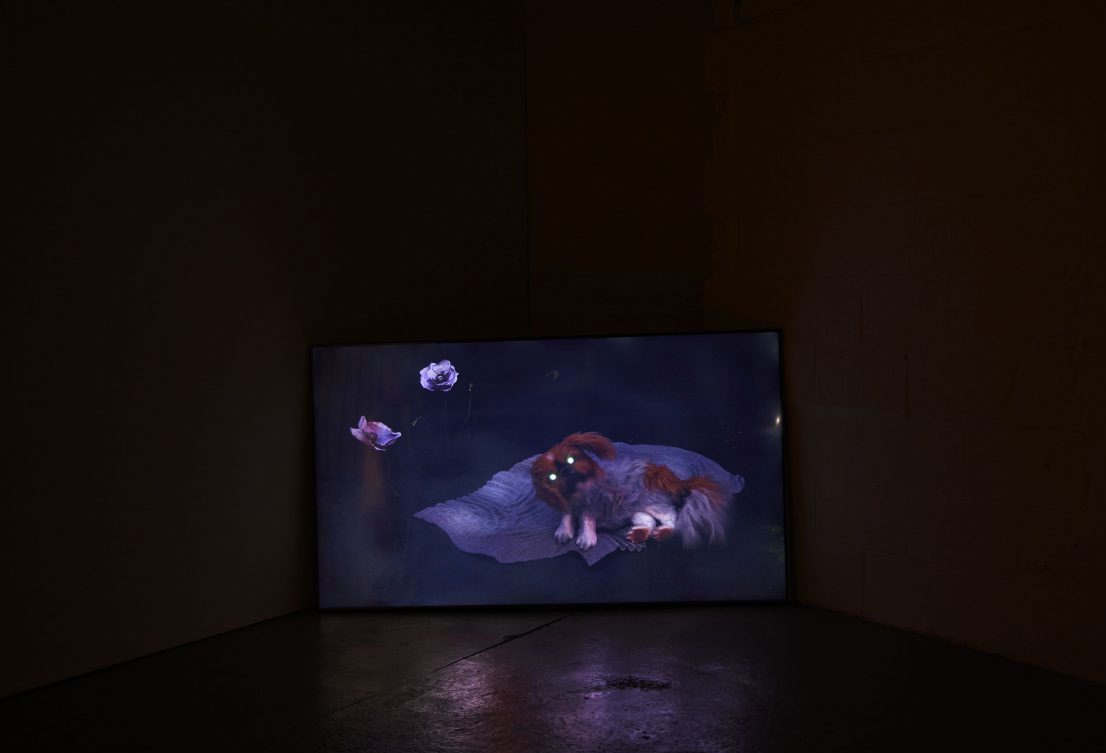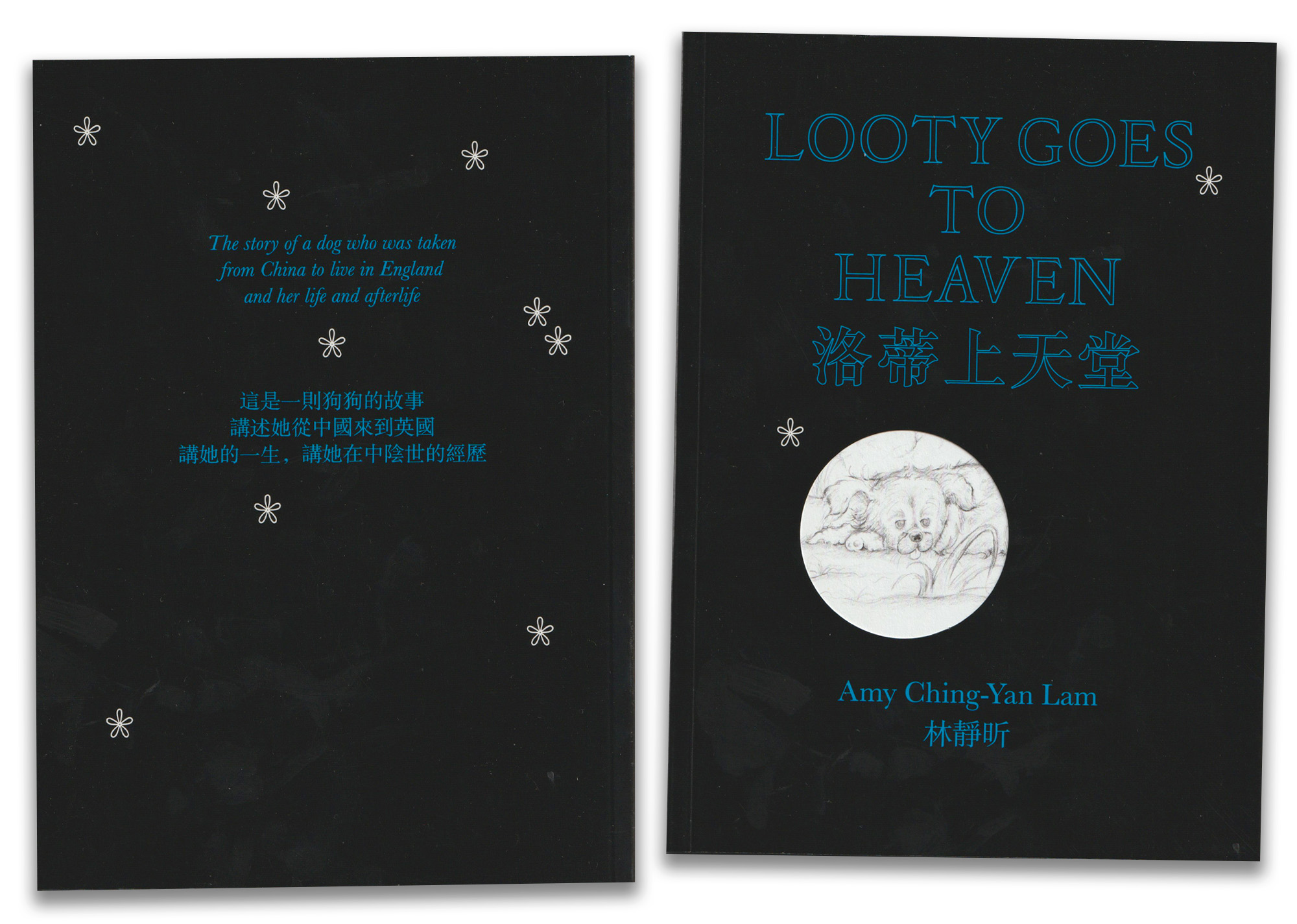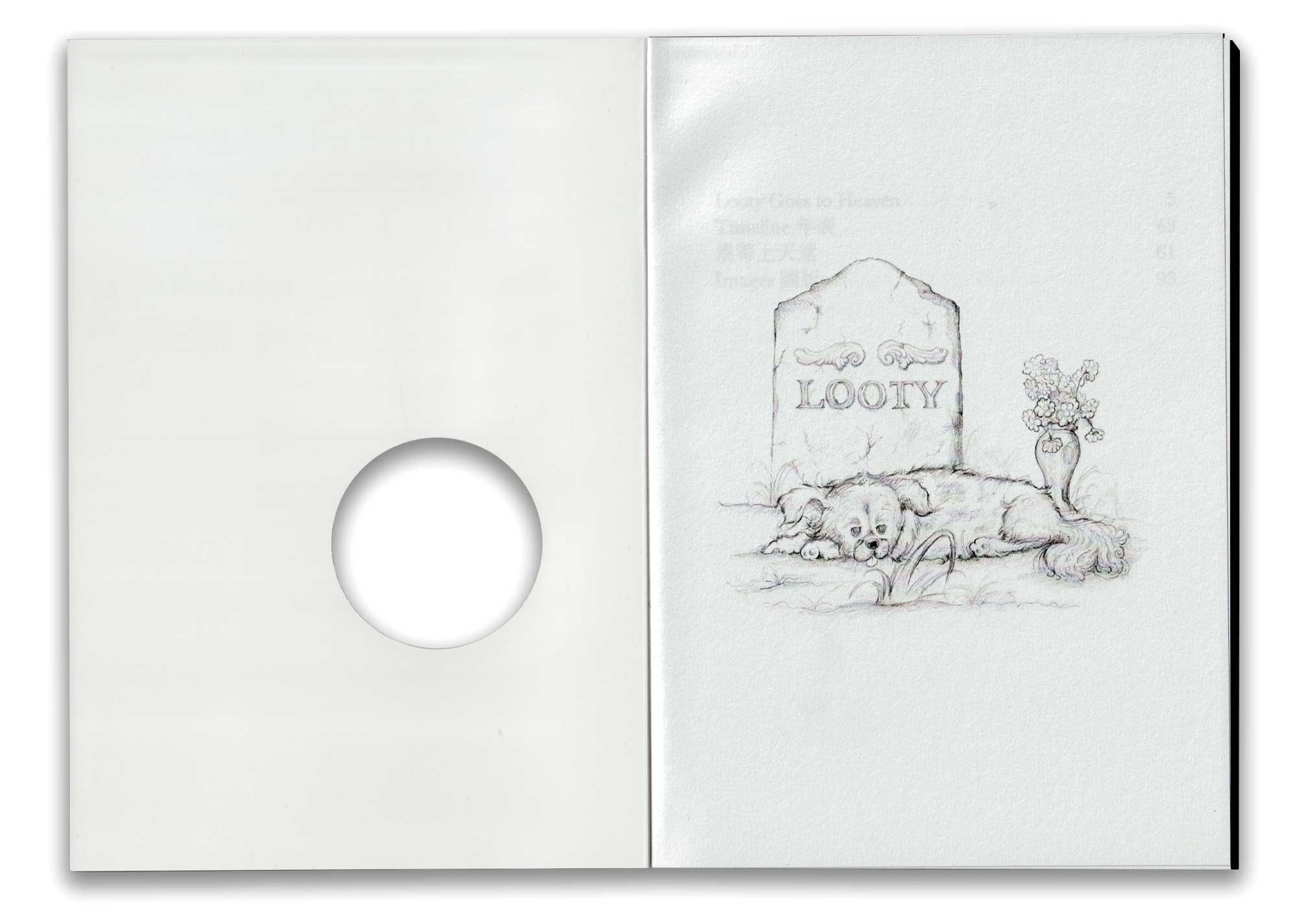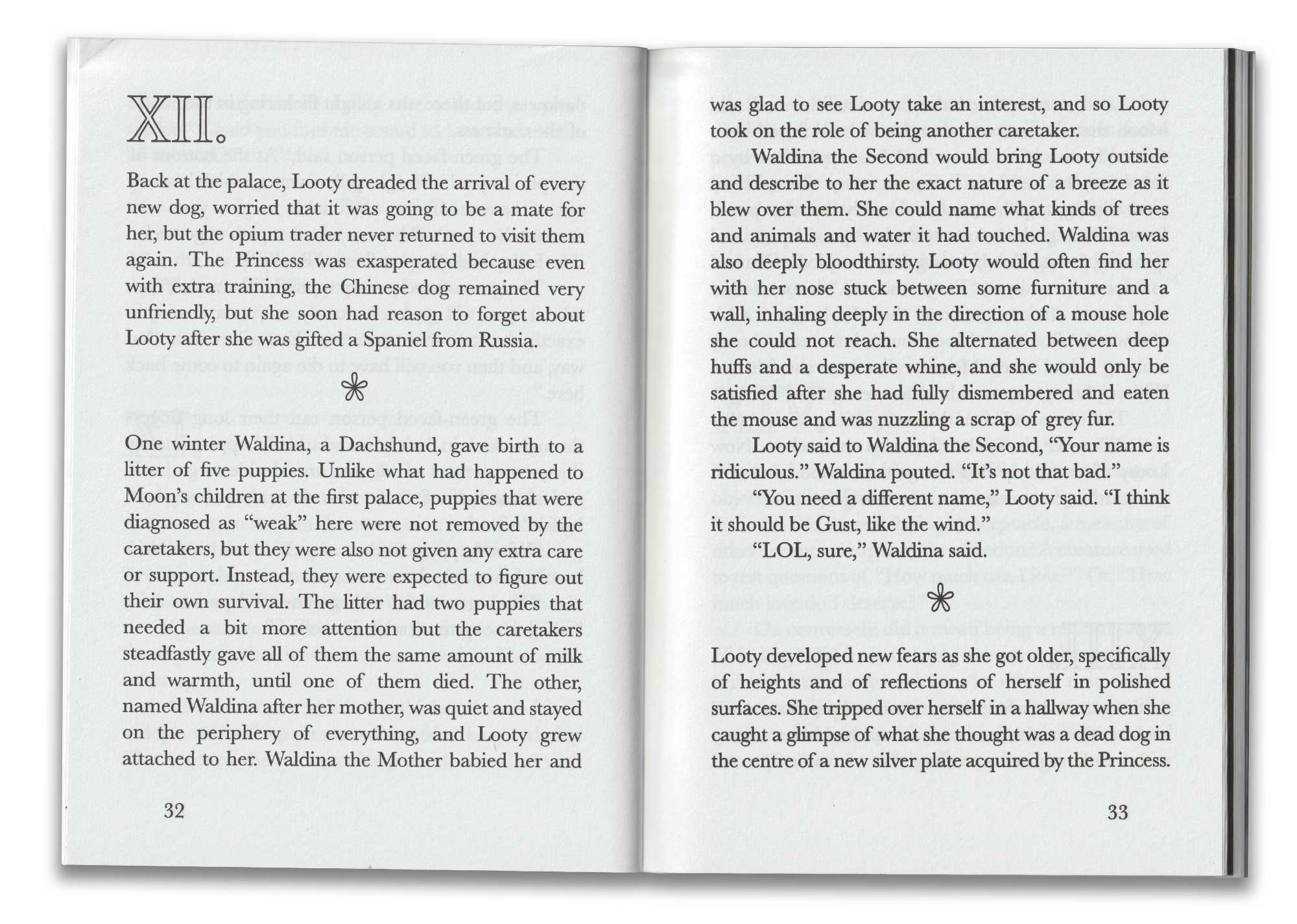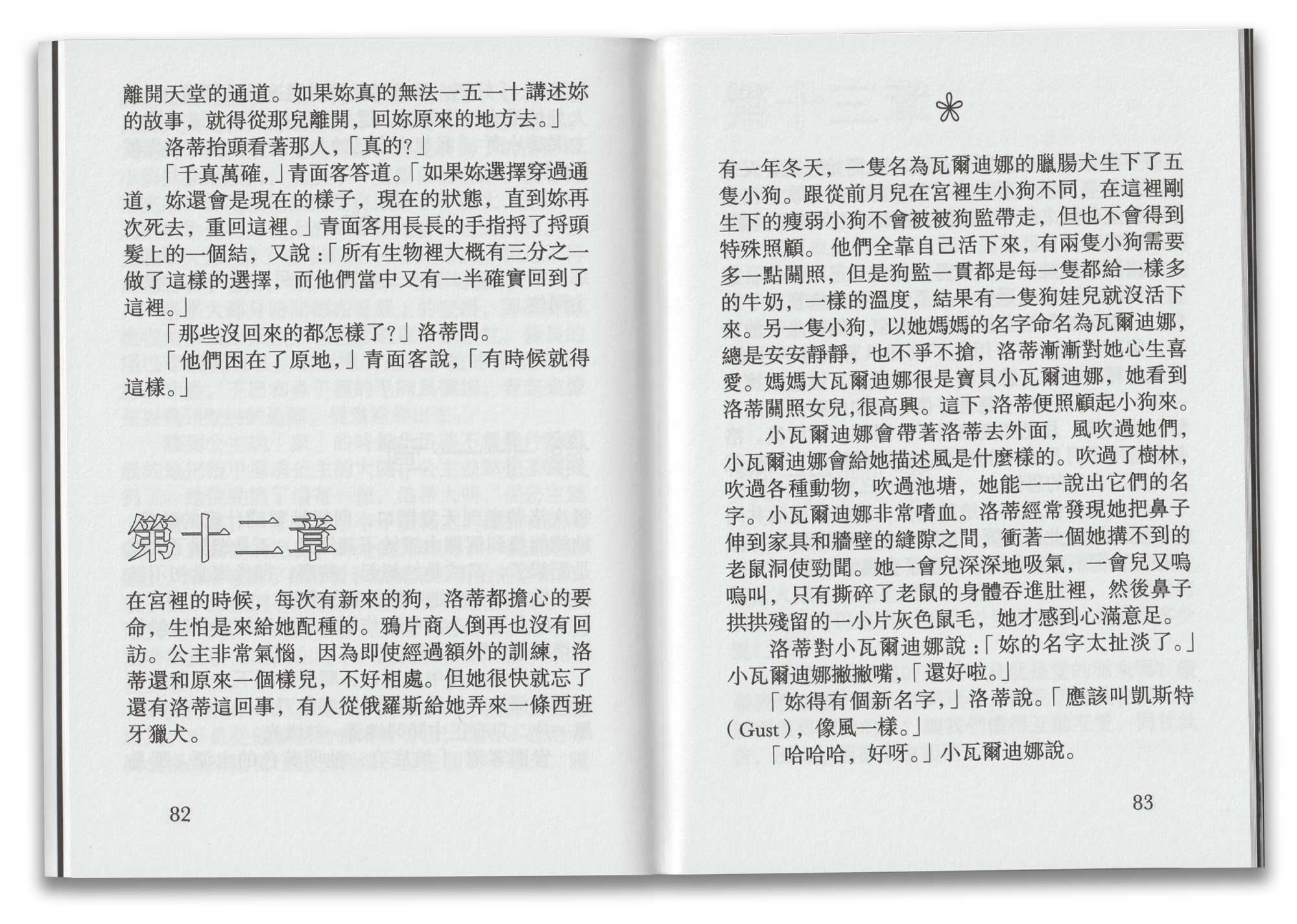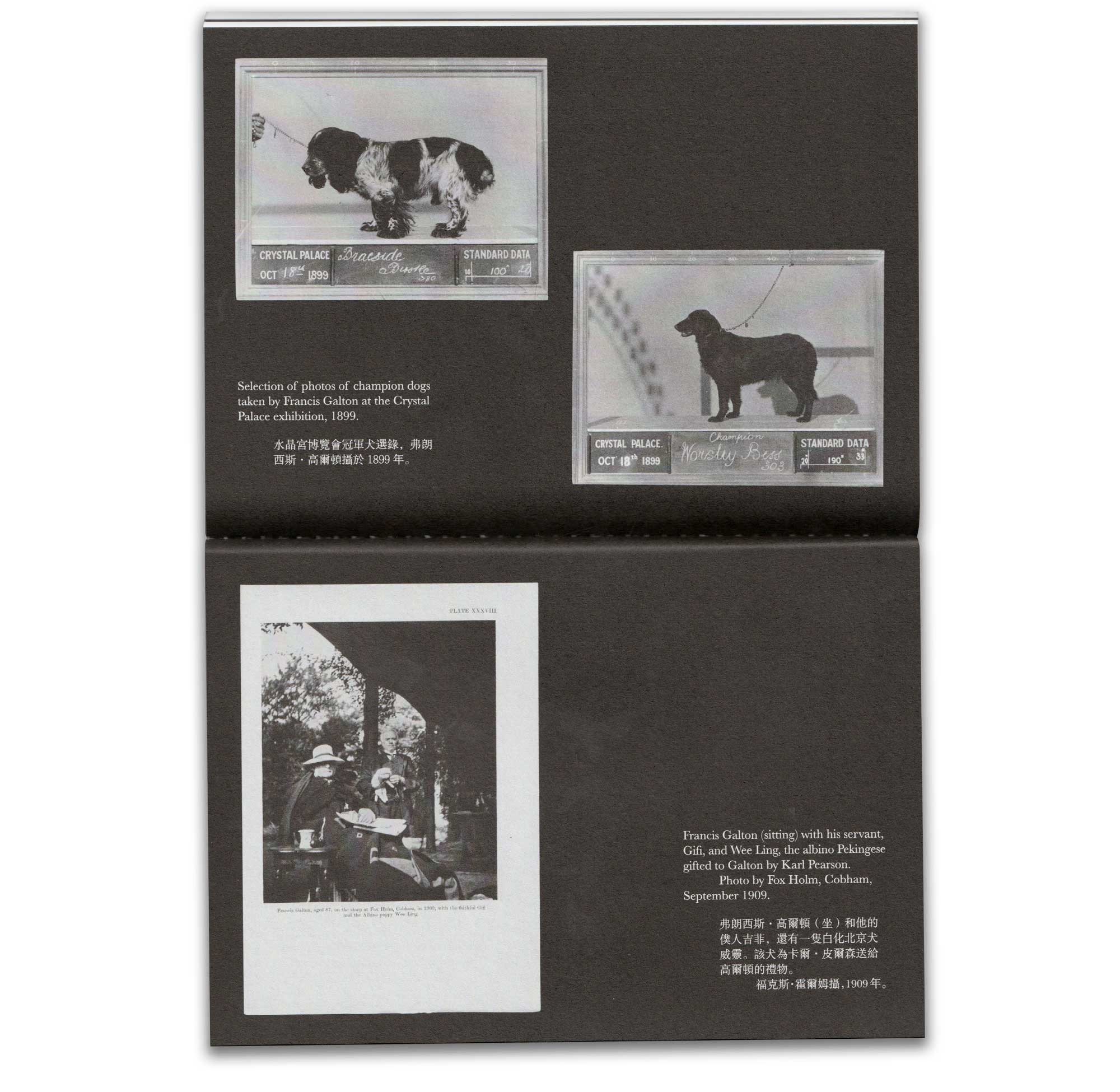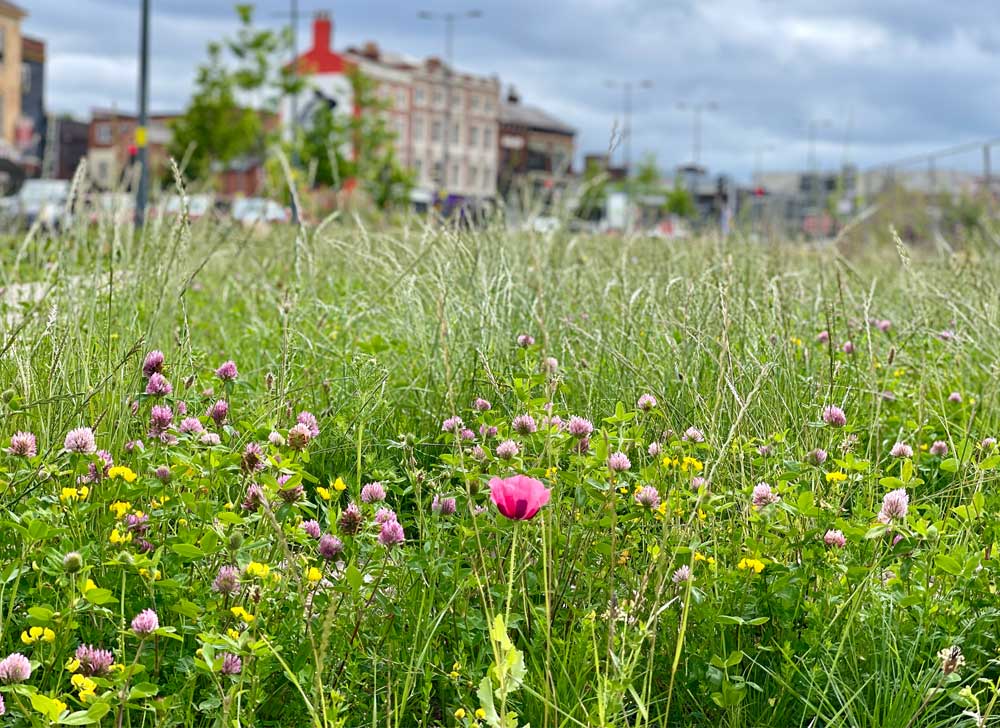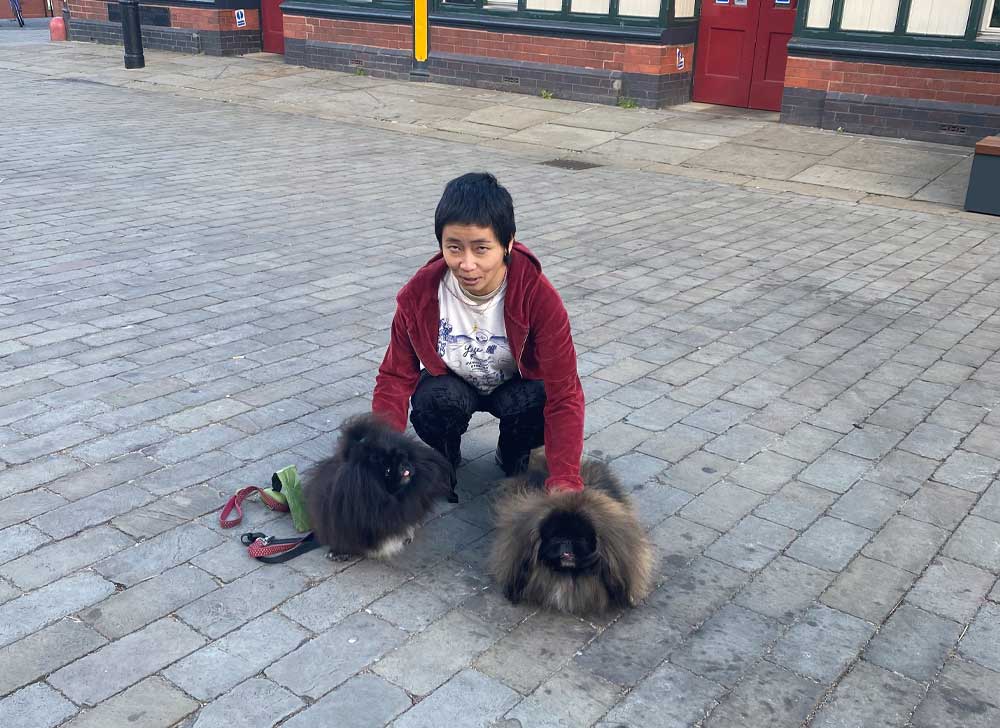Looty Goes to Heaven
Back at the gate to heaven, Looty watched a hedgehog waddle its way through the hole in the thicket. Before she could go in, she had to give the green-faced person a true account of her life. The green-faced person said, in their gravelly voice, “It can be as short or as long as you like. The only condition is that it must be absolutely true.”
A small Pekingese dog was taken from China at the end of the Second Opium War by British troops, brought to England, and gifted to Queen Victoria. This dog was renamed Looty, after the activity of “looting,” in reference to how the dog was obtained from the Summer Palace (Yuanmingyuan) outside of Beijing. Looty lived for twelve years at the British royal palaces and died in 1872. It is not known where she was buried.
This project revives Looty’s story in the context of Birmingham, UK, which is the current site of Crufts, the largest dog show in the world, as well as the home of Ty-phoo tea, a brand named after the Chinese word for doctor. The colonial trades of tea and opium were closely linked: in the 1800s, the British demand for tea became so costly that British merchants invented a new, exploitative form of opium farming to pay for it. Grown by indentured labourers on plantations in South Asia, opium was imported on a massive scale into China until the Chinese objected, leading to the Opium Wars. Meanwhile, Looty was the first Pekingese dog in England, and her arrival informed new trends in chinoiserie, dog breeding, and eugenics. For close to fifty years, Pekingese dogs were the most popular breed of toy dog in England.
Looty Goes to Heaven takes the form of an animation, a speculative fiction, and a poppy meadow. The looping animation, made in collaboration with artist Emerson Maxwell, shows Looty in a state of eternal rest. The speculative fiction book, available in English and Traditional Chinese, imagines Looty’s life and afterlife.
Looty’s Meadow (2024-ongoing), planted in Digbeth, Birmingham, a few blocks away from the site of the Ty-phoo tea factory, features varieties of papaver somniferum (opium poppy) and papaver orientale alongside a wildflower meadow.
